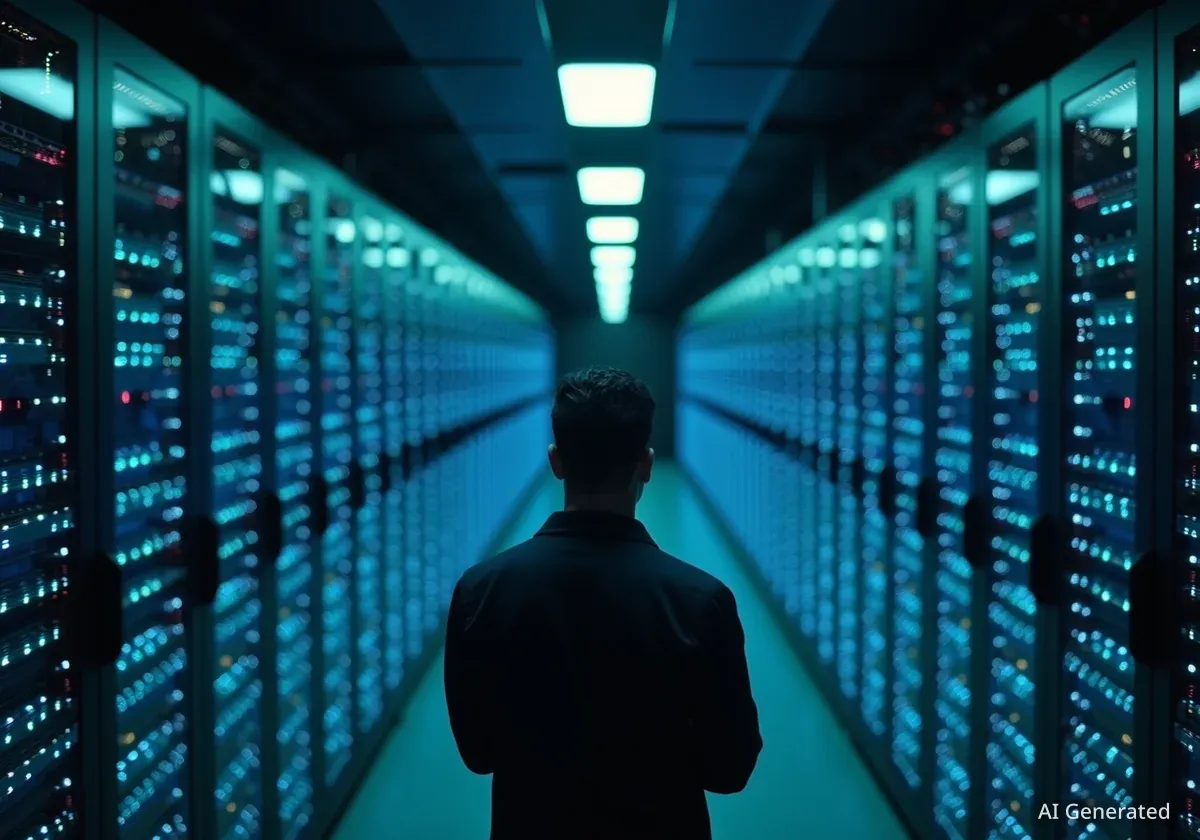A portion of the former General Motors complex in Lordstown, Ohio, is set to be redeveloped into a manufacturing site for artificial intelligence servers and a new data center. The project is connected to a major international AI initiative involving high-profile technology firms such as Softbank, Oracle, and OpenAI.
The development marks a significant technological investment in Ohio's Mahoning Valley. According to local technology consultant Paul Hugenberg, the facility will be part of the heavily backed "Stargate Project," an ambitious global effort to build out the infrastructure required for advanced artificial intelligence.
Key Takeaways
- A new AI data center and server manufacturing facility will be located at the former GM site in Lordstown, Ohio.
- The project is part of the international "Stargate Project," backed by Softbank, Oracle, and OpenAI.
- The facility will store large datasets essential for processing AI queries and will be one of several such sites in the U.S.
- A SoftBank spokesperson stated the facility will not be large, addressing potential concerns about energy and water use.
- Local impact is expected to include initial construction jobs followed by automated operations with minimal noise or environmental disruption.
Lordstown's Role in a Global AI Initiative
The new facility in Lordstown will serve a critical function in the development of artificial intelligence. It is designed to house and manage the vast datasets that are necessary for training and operating large AI models. These datasets allow AI systems to understand and respond to complex, contextual questions.
This data center will be one of several locations across the United States contributing to the same overarching project. The distributed nature of the infrastructure highlights the scale of the investment required to power the next generation of AI technologies.
"Softbank, Oracle, OpenAI, the Stargate Project is an international, heavily backed, large investment in AI. So the [Mahoning] Valley being a part of that is a very significant move," said Paul Hugenberg, owner of the technology advisory company Pelican3 Consulting.
Hugenberg's comments underscore the importance of this development for the region, positioning it as a participant in a cutting-edge global technology race. The involvement of major corporations like Softbank and Oracle signals a high level of confidence in the project's viability and strategic importance.
Facility Operations and Resource Management
Data centers are known for their significant consumption of energy and water, primarily for powering servers and for cooling systems. These operational requirements often raise environmental and resource concerns in local communities.
However, a spokesperson for SoftBank has addressed these concerns directly, stating that the Lordstown facility is not planned to be a large-scale operation. This suggests that its resource footprint may be smaller than that of massive hyperscale data centers operated by other tech giants.
Understanding Data Center Impact
Modern data centers are the backbone of the digital economy, but they require substantial resources. A typical data center can use as much electricity as a small town. Companies are increasingly exploring more efficient cooling technologies and renewable energy sources to mitigate their environmental impact. The statement from SoftBank indicates a potential focus on a more moderately sized, efficient design for the Lordstown site.
The primary function of the center will be to generate artificial intelligence by processing information. The servers manufactured and operated on-site will contribute to a nationwide network dedicated to advancing AI capabilities.
Local Economic and Community Impact
The development is expected to bring distinct phases of economic activity to the Lordstown area. Paul Hugenberg outlined what residents and the local workforce can anticipate as the project moves forward.
"You're obviously going to see a lot of upfront building and infrastructure," Hugenberg explained. This initial construction phase will likely create temporary jobs in building trades and related support services.
Automation and the Future of Data Centers
Modern data centers are highly automated environments. After the initial build-out, they require a relatively small number of on-site staff for maintenance, security, and specialized technical support. The primary economic benefit often shifts from direct employment to indirect jobs in supply chains and local services.
Once operational, the nature of the employment opportunities will change. "A.I. automation the data centers will be automated," Hugenberg noted. This means the long-term, on-site workforce will be lean. He added that the more visible job creation will be in "side and feeder jobs" that support the facility's operations indirectly.
Minimal Disruption for Residents
For those living near the former GM complex, the operational impact of the data center is expected to be minimal. Unlike traditional manufacturing plants, data centers are known for being quiet and clean operations.
Hugenberg confirmed this, stating that residents should not expect significant disturbances. "They're not going to [hear] the noise, you know, it's not going to create any smells. It's just going to be a large building sitting at the Lordstown facility."
This low-impact profile makes such facilities suitable for redevelopment sites like the Lordstown complex, bringing high-tech investment to the area without the environmental drawbacks associated with heavy industry from the past.





